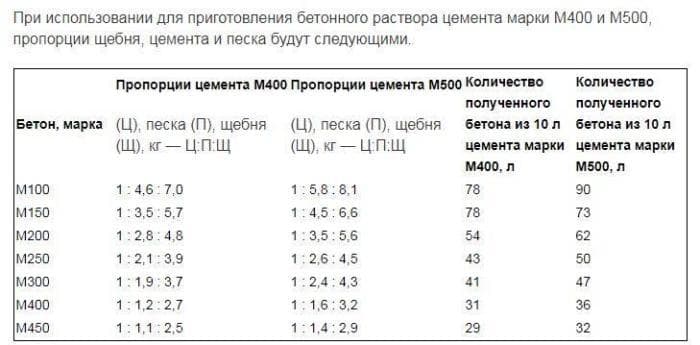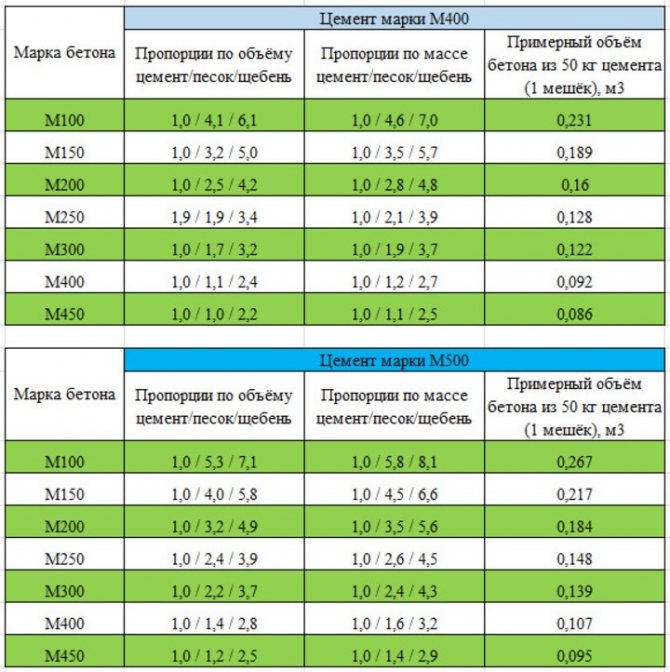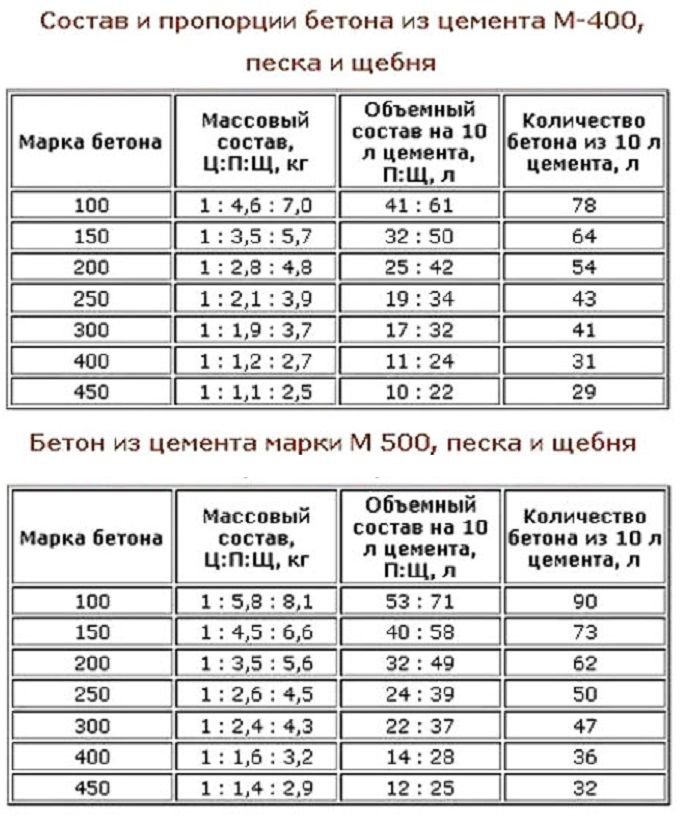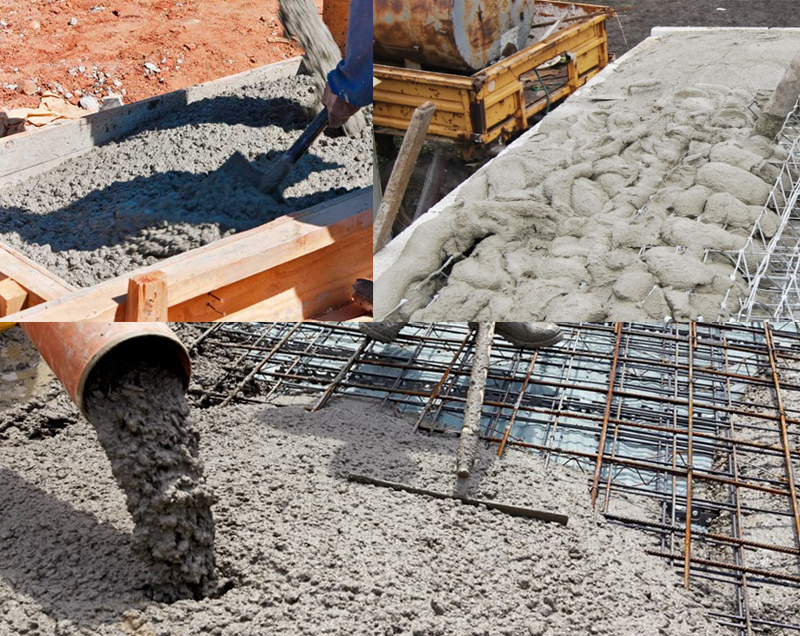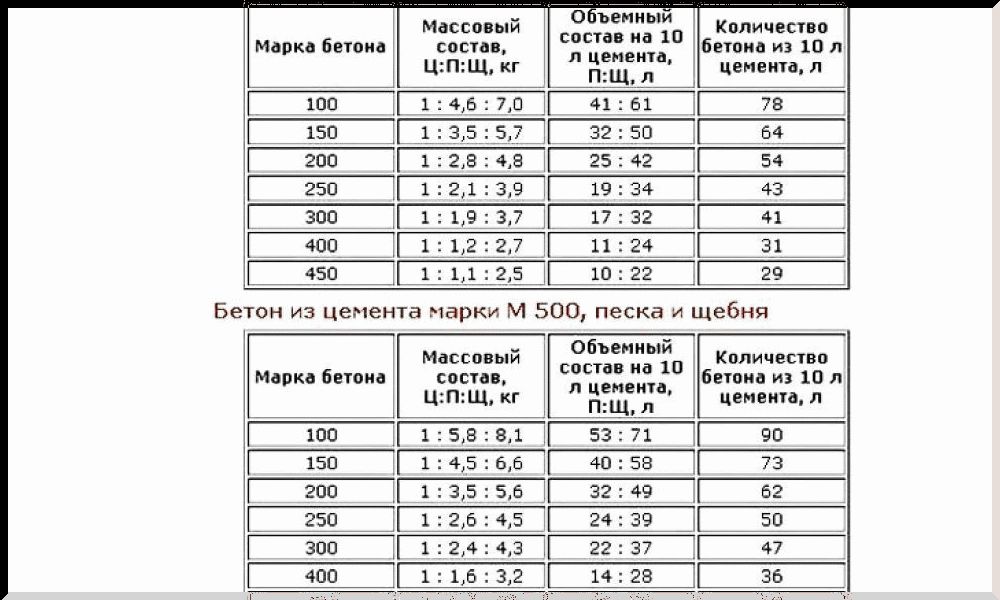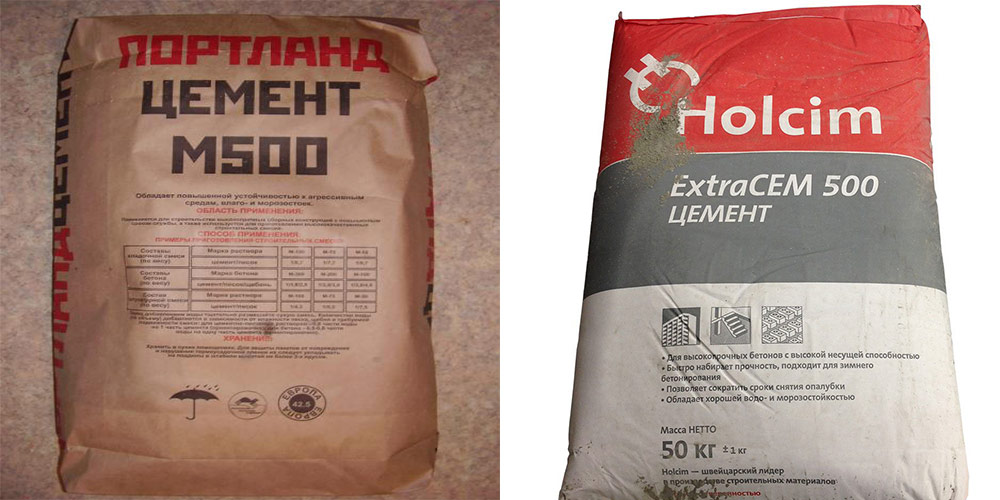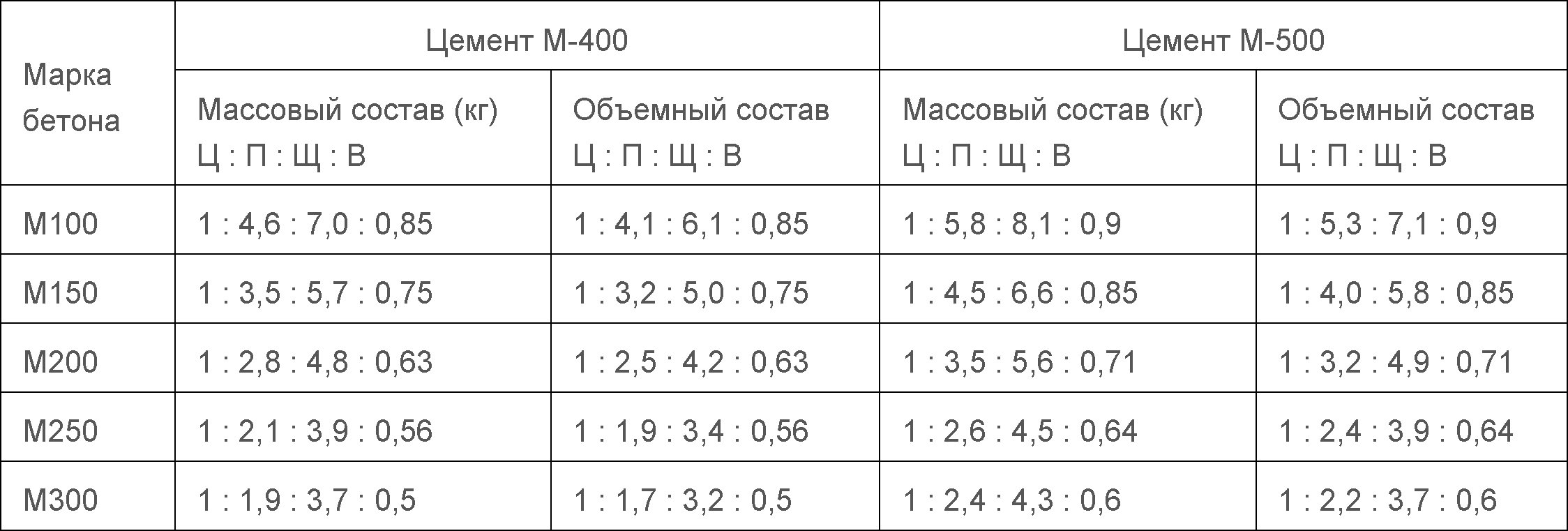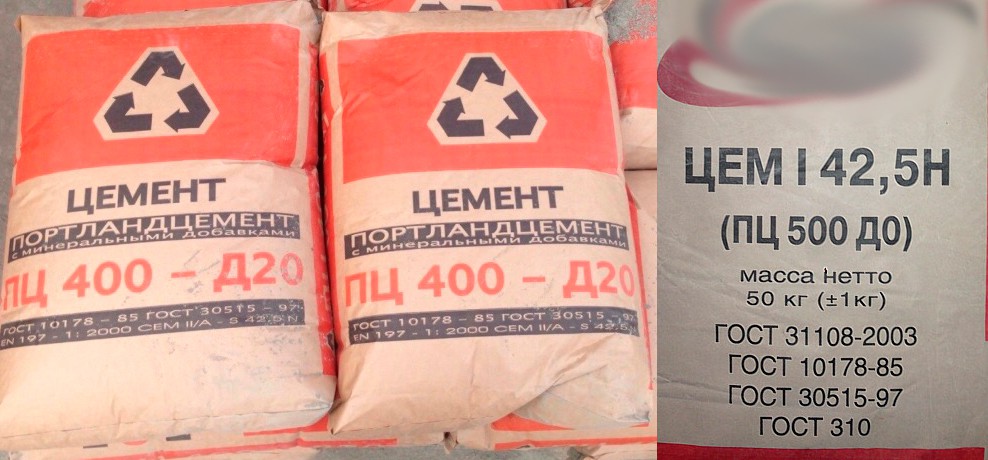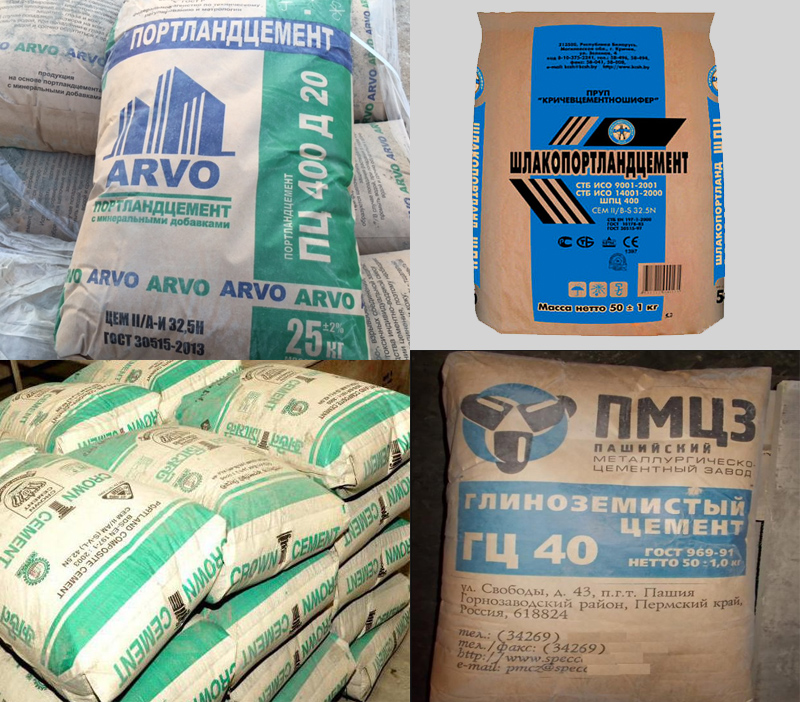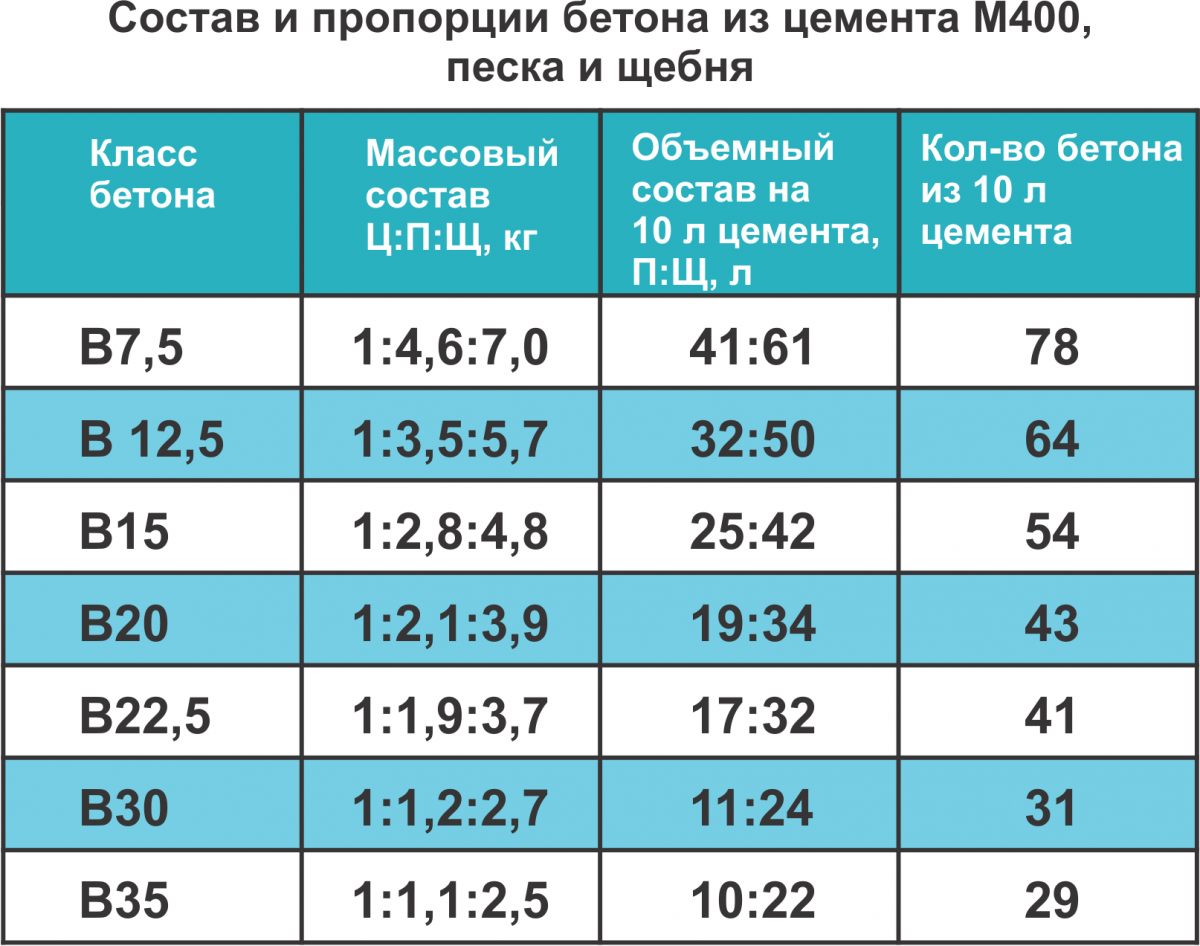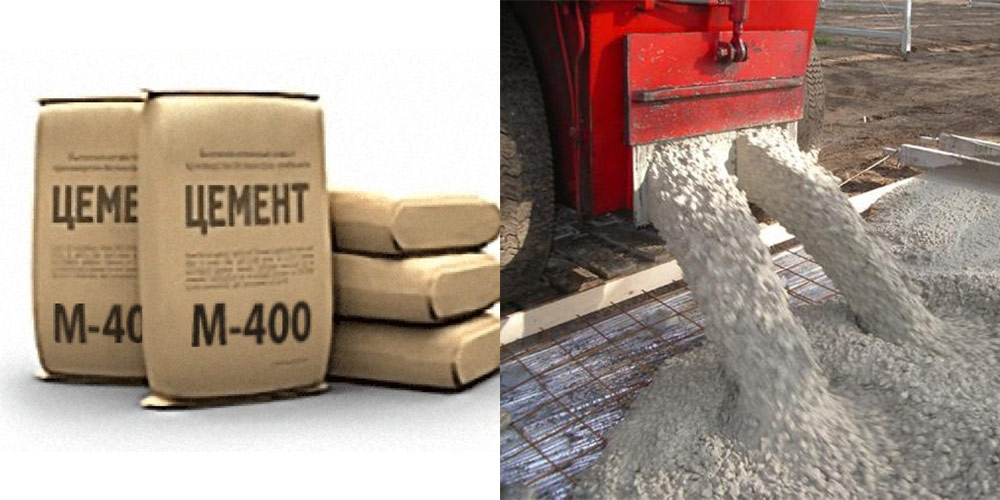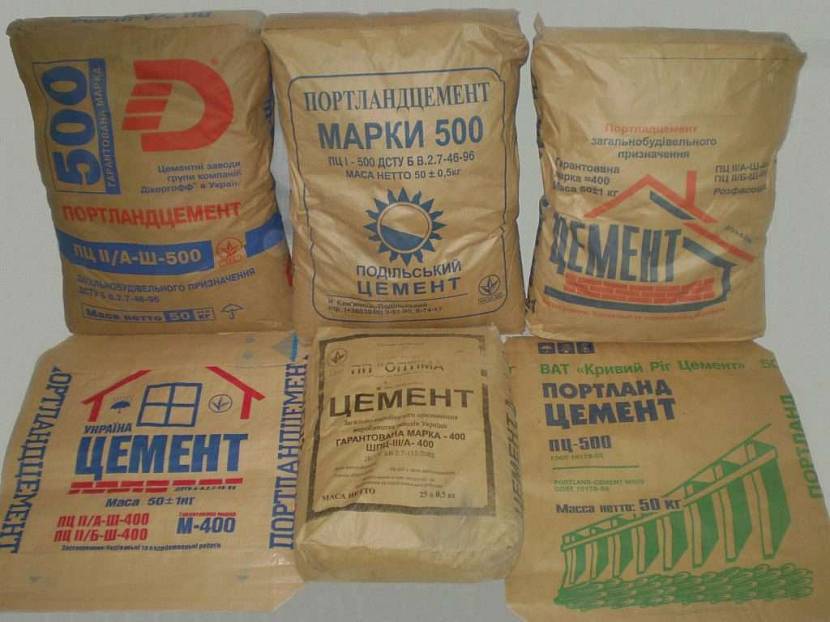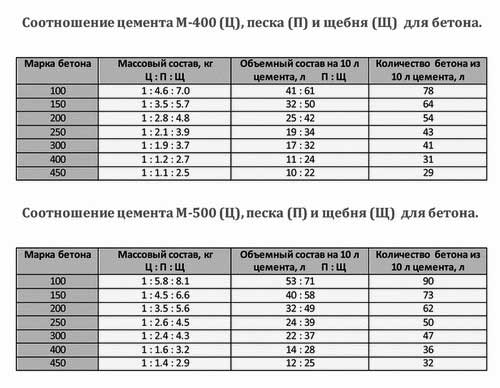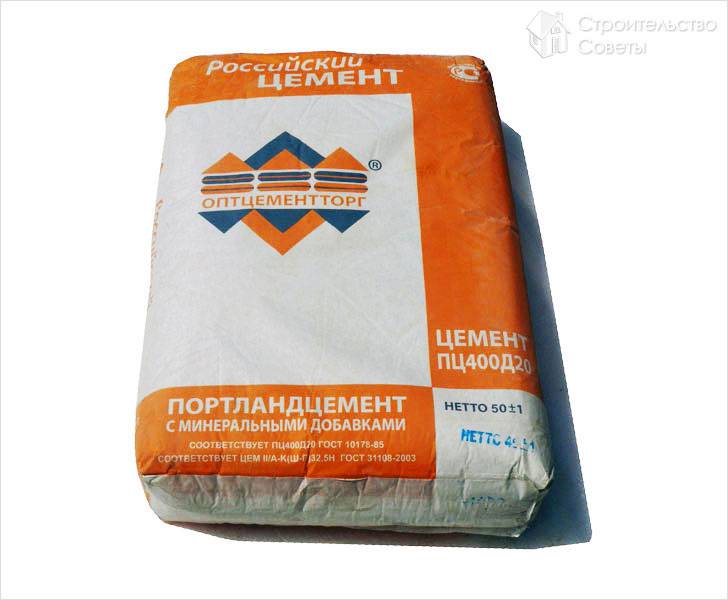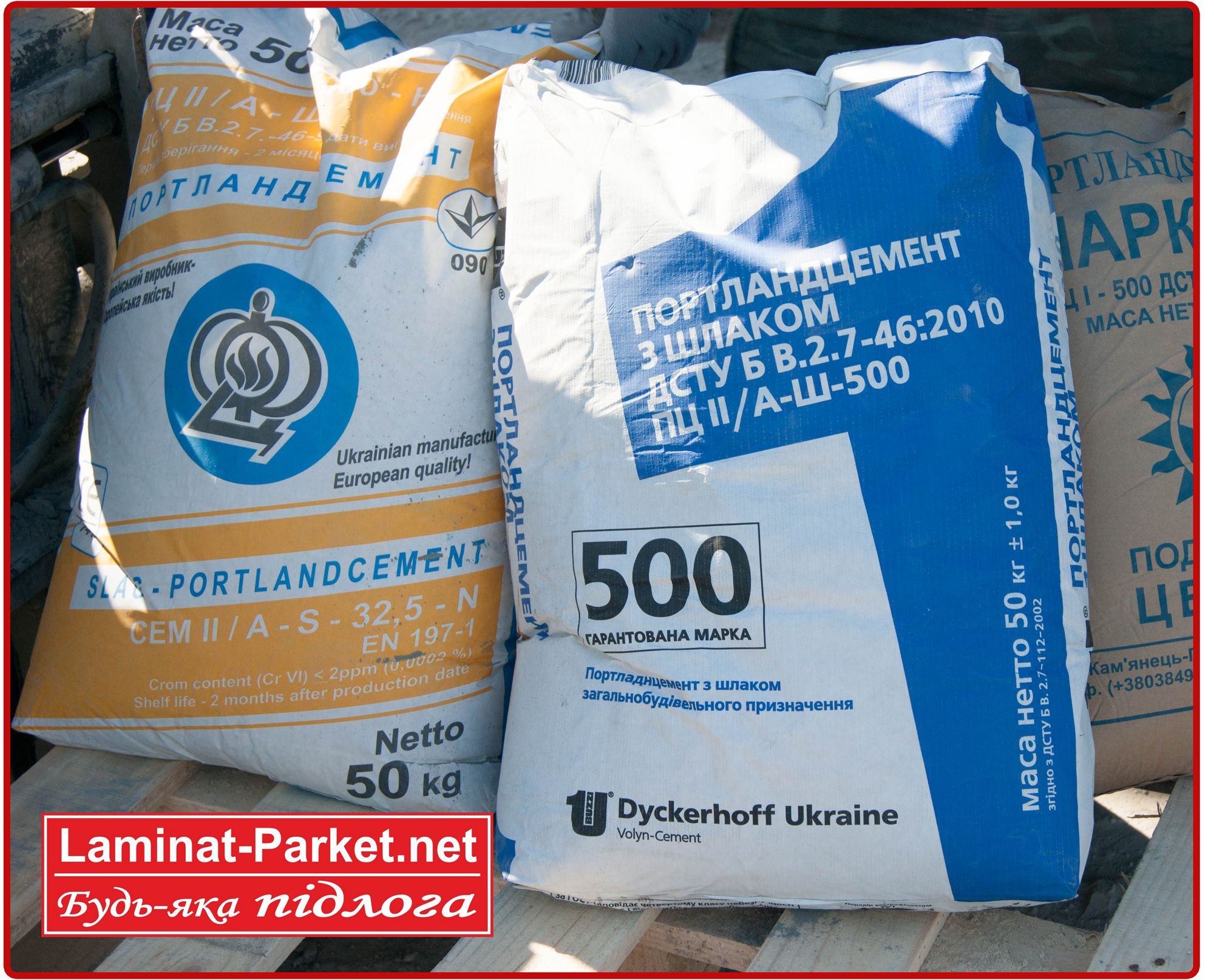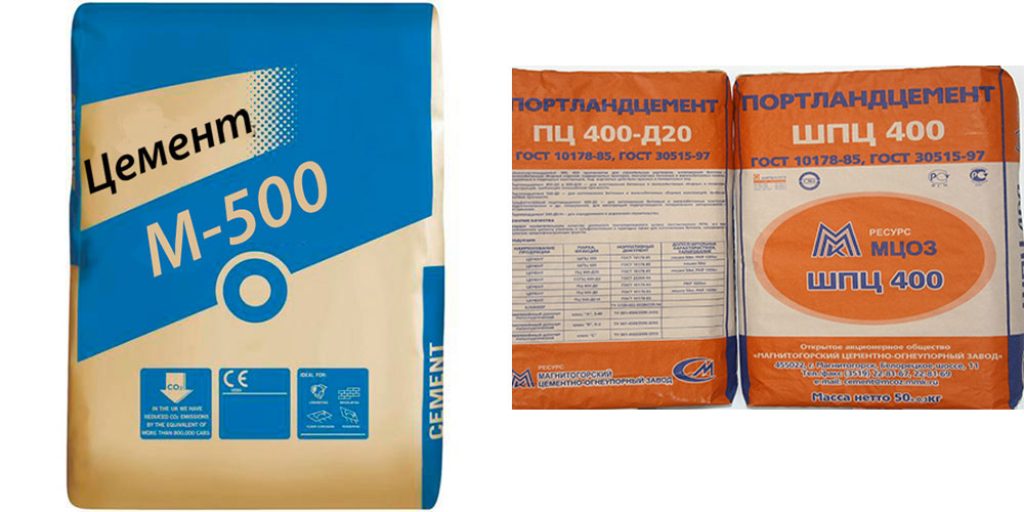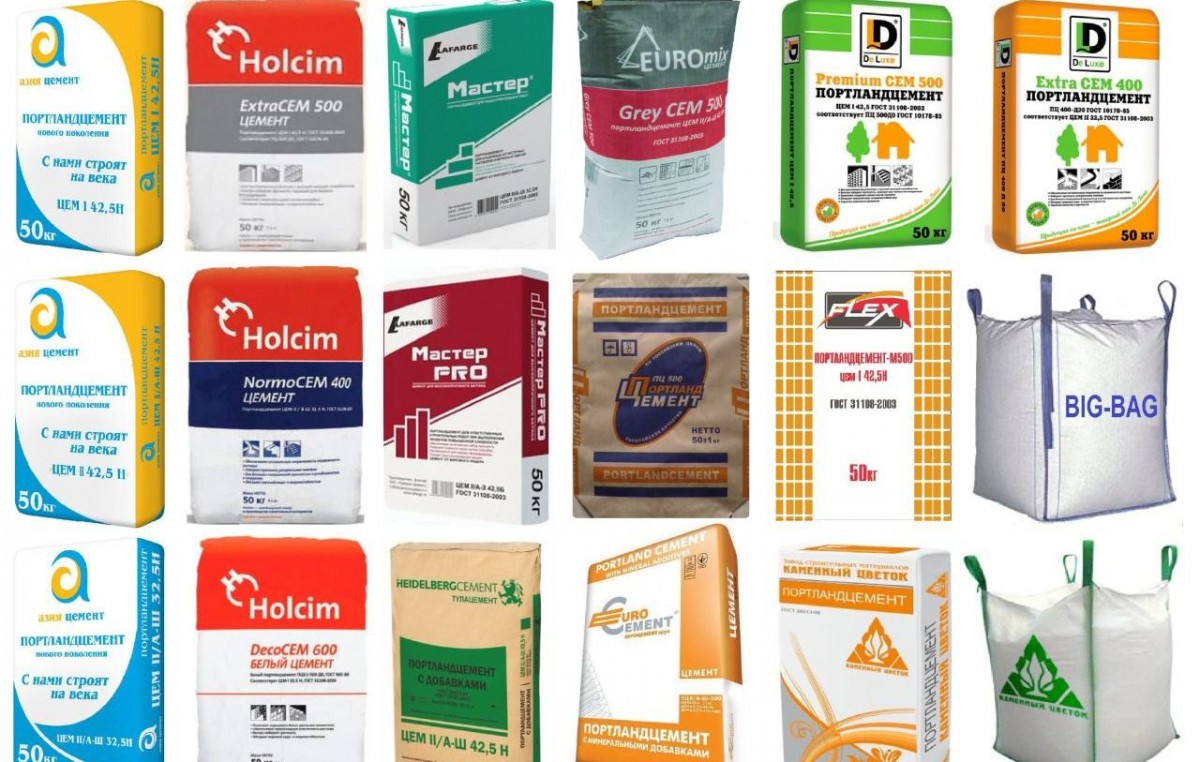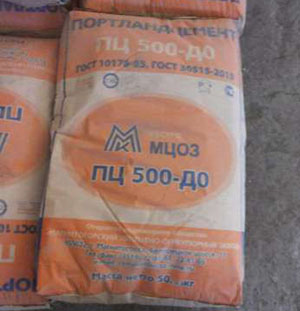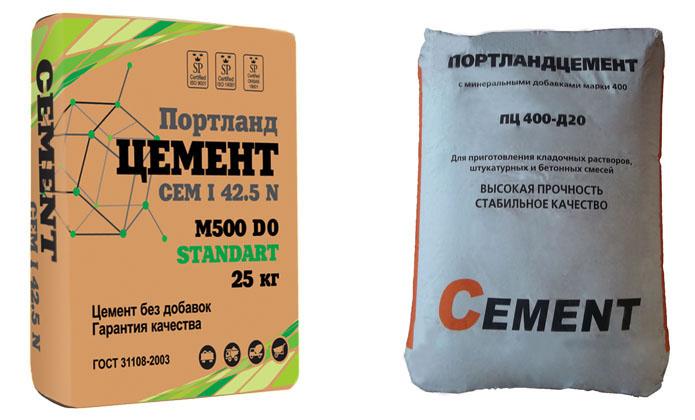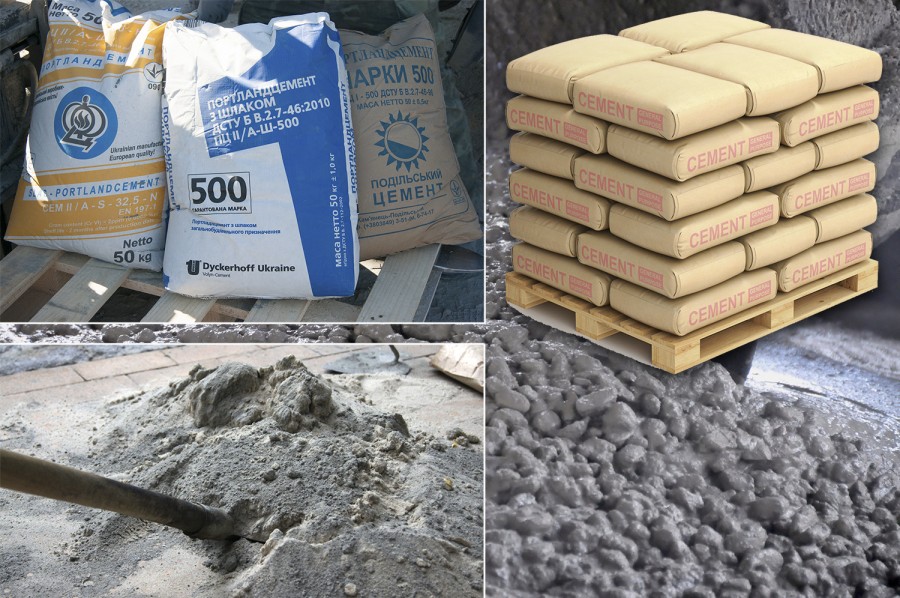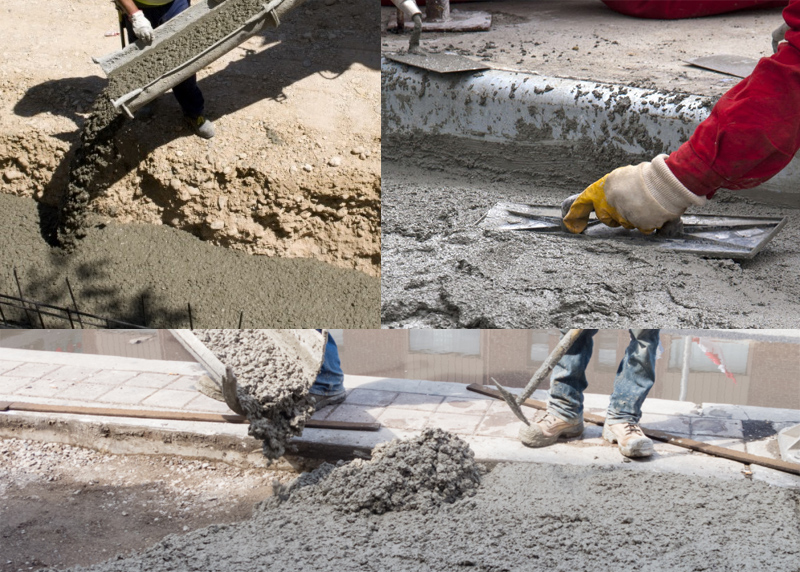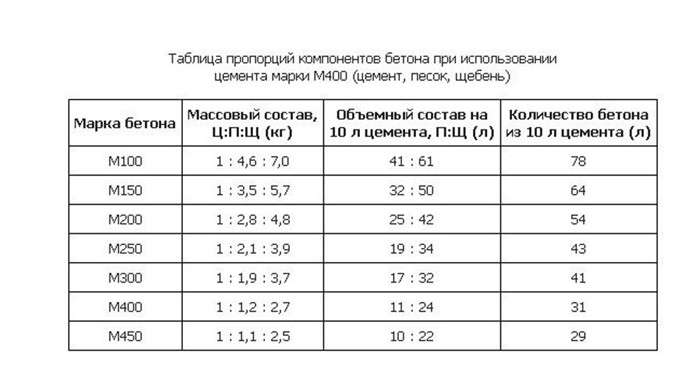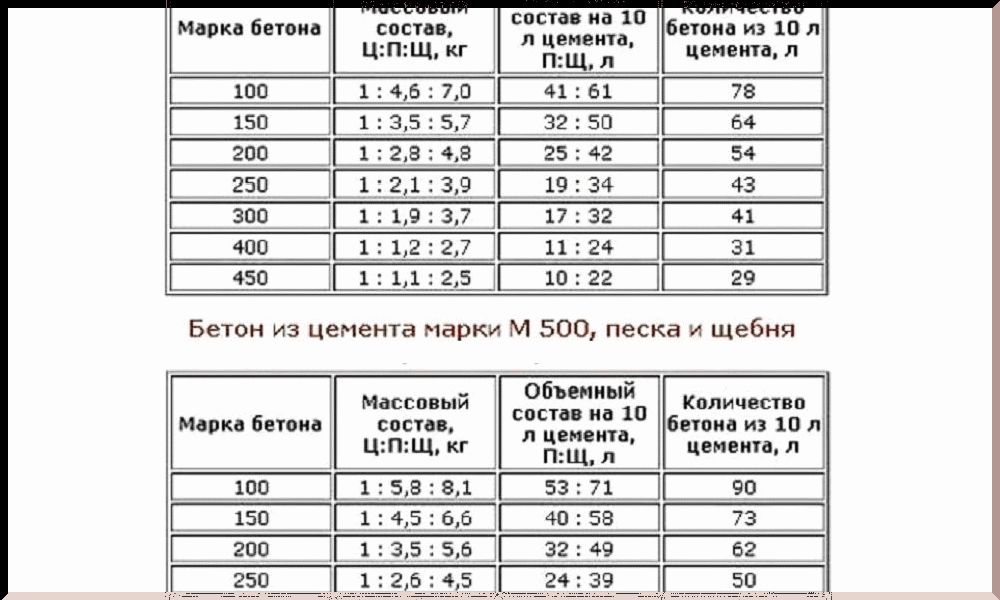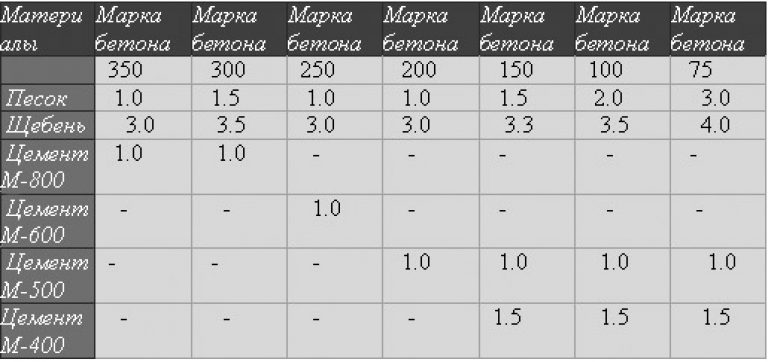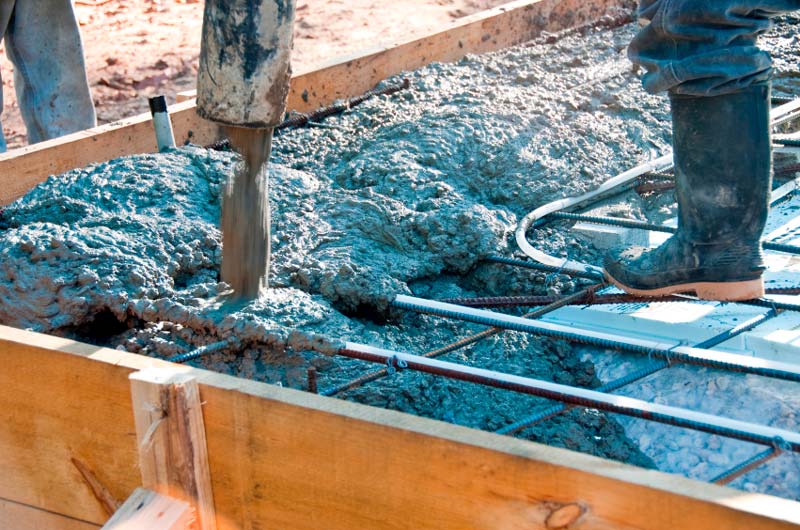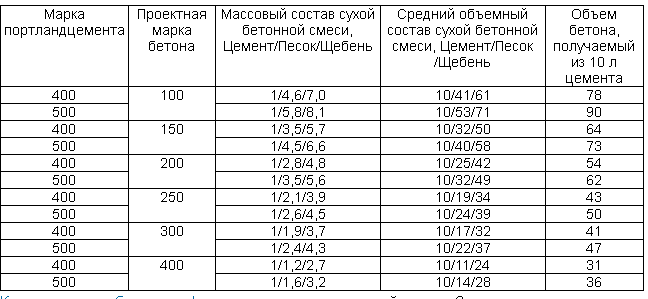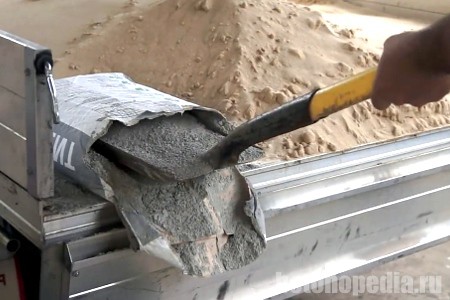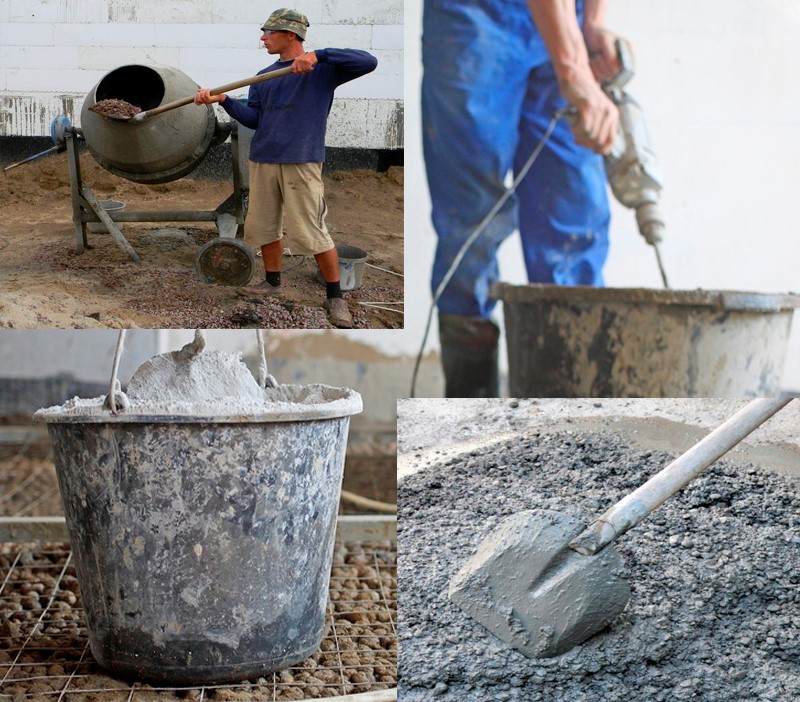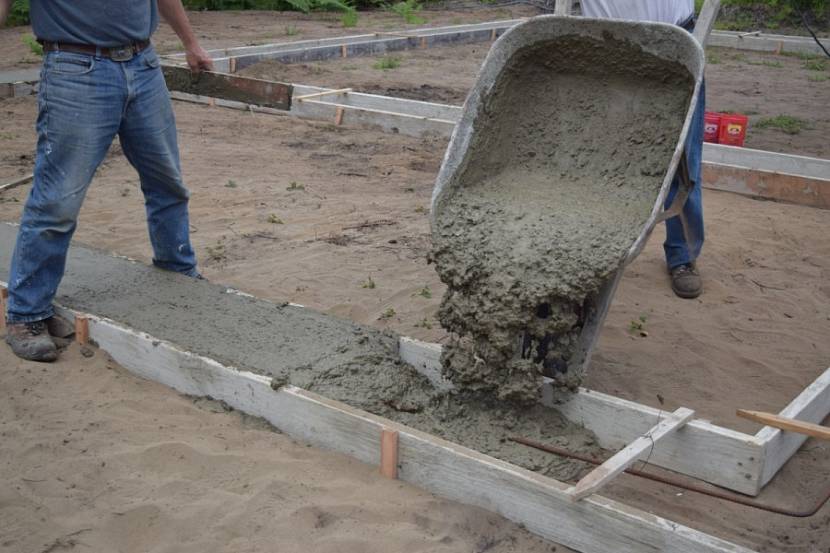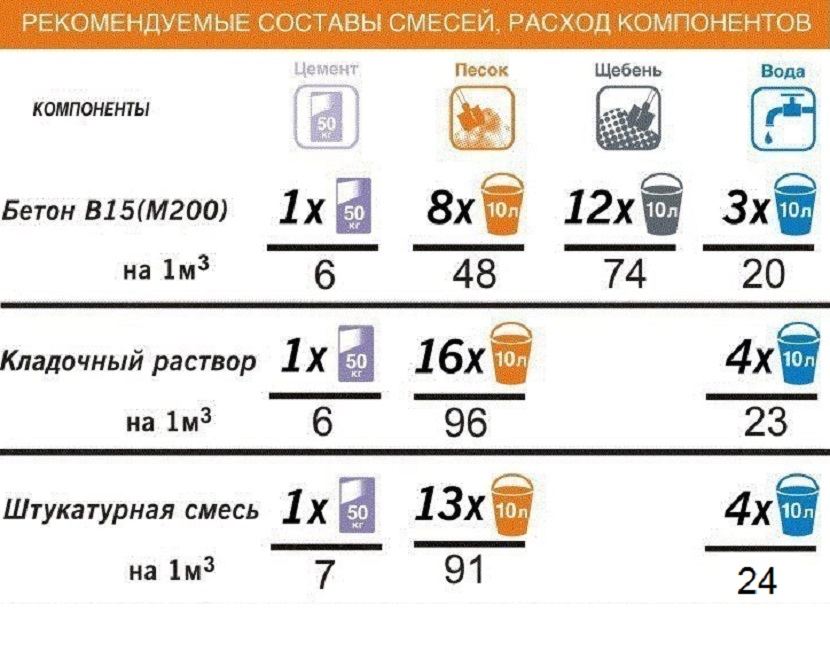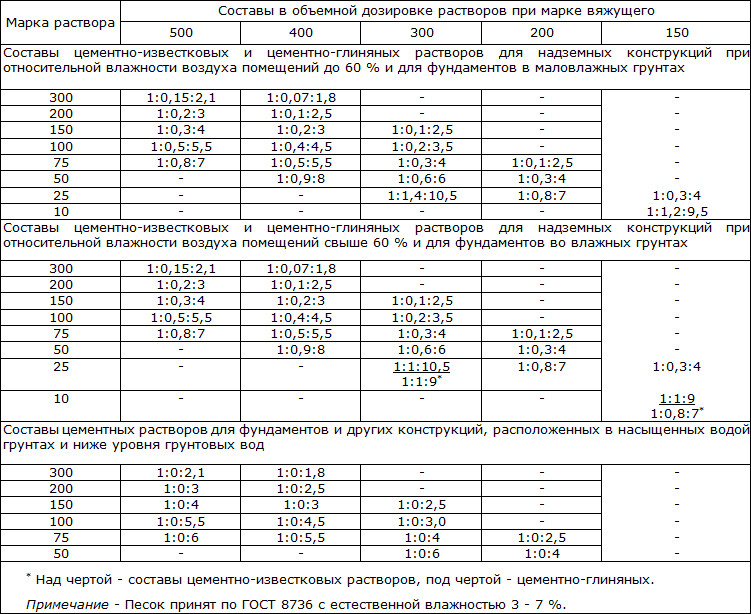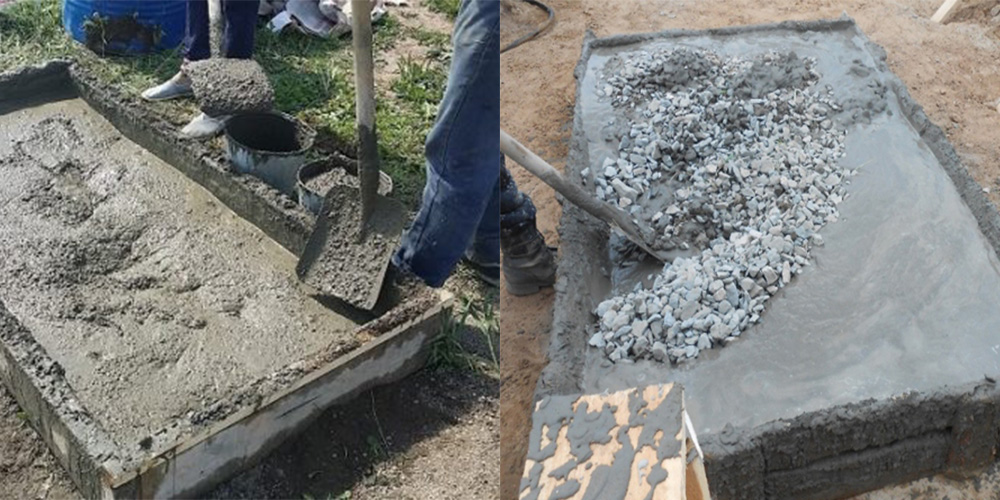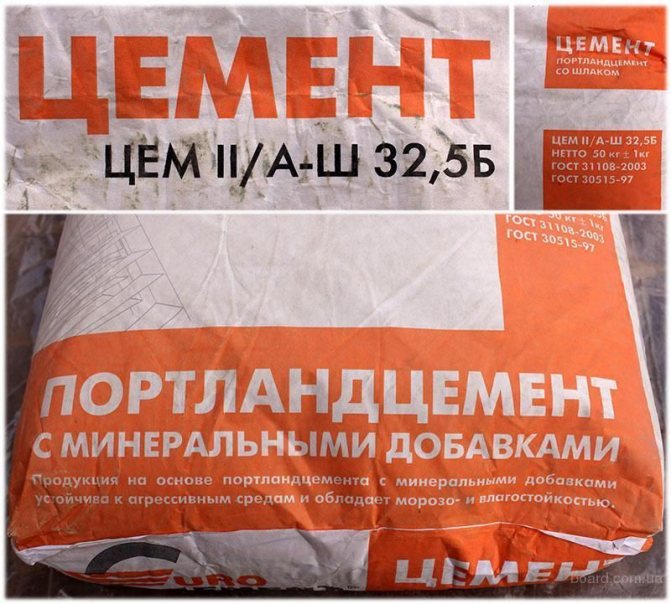What is sulfate resistant cement
Sulfate-resistant cement is a material that significantly expands the possibilities of using concrete solutions in construction for aggressive conditions. The need for it is dictated by objective circumstances, when ordinary concrete is destroyed during operation. Material requirements are standardized by state and international standards.
What is the material
Sulfate-resistant cement is a corrosion-resistant material, which contains special additives (aluminates and silicates) to increase resistance to aggressive influences. It has a specific field of application when waters with a high content of sulphates are present and cyclical effects of water in large quantities are noted.
A high concentration of sulfates in a humid environment provokes sulfate corrosion. In this process, concrete components enter into a chemical reaction, which leads to the formation of a cement stone inside and to the precipitation of salt crystals on the walls. The structure of the concrete is broken and it collapses. Cyclic moisture also has a destructive effect on concrete - constant cycles of drying and abundant moisture, freezing and thawing. This is why sulphate corrosion resistant cement was developed.
Types of material
Pozzolanic cement. It is based on blast-furnace slag and volcanic rocks (pozzolans). Among the latter components are tuff, pumice, volcanic ash. These are active mineral additives that provide sulfate resistance. This material is not intended for cyclic humidity conditions.
Portland cement with increased sulfate resistance. It is made with the addition of mineral additives to the M400 brand. The material hardens slowly with a gradual set of strength and reduced heat generation during setting. It can be used in any operating conditions.
Portland cement with a high content of sulfate-resistant minerals. The additive content is 6-10%. The material of the M400 and M500 grades is produced. It is distinguished by increased frost resistance and resistance to cyclic humidity.
Sulphate-resistant slag Portland cement. This is a mixture of blast furnace slag with Portland cement clinker with the addition of aluminates
An important requirement - the slag should not consist of more than 10% aluminum oxide. The material of grades M300 and M400 is produced
Has a high sulfate resistance, but is afraid of frost.
In addition to the compositional subdivision, the cement in question has a gradation in compressive strength. This indicator is entered into the marking - from M200 to M500.
Composition
According to the production technology, cement resistant to sulfates does not differ from the production of conventional cement. In fact, both materials are fine powders with astringent properties. The structure is provided by a special drying mode and thorough grinding in the bunkers of special mills. The difference is ensured by the desired composition of the mixture.
The basis of mineral additives are blast furnace slags of the electrothermophosphoric or granular type. Usually, their content fluctuates in the range of 10-22%, and for sulphate-resistant Portland slag cement - 42-55%. Active ingredients - additives sedimentary rocks type. They are introduced in the amount of 6-12%.
To ensure increased resistance to aggressive influences, special requirements are put forward for the composition of the clinker used. The content of tricalcium silicate in it should not exceed 52%, tricalcium aluminate - no more than 6%, and C3A + C4AF - no more than 23%. The composition includes oxides of aluminum and magnesium, but not more than 4-5%. The alumina modulus of the clinker exceeds 0.7.It is recommended to introduce flask and tripoli into the clay component of Portland cement.
The clinker is based on alit or belit. In the first case, accelerated hardening and rapid strength development is ensured. Belite is characterized by long-term setting, but the final strength exceeds alite.
Active additives are used with great care. Excessive content of them can deteriorate the technical characteristics of cement.
According to GOST, an increase in resistance to sulfates is achieved by the introduction of surfactants. So hydrophobic, plasticized materials have additives in the form of soap or alcohol-sulfite vinasse.
Brands: application dependent
The answer to the tricky question, which cement is better, depends on what kind of work we are talking about. Therefore, it is necessary to give examples of the use of the material in one capacity or another.
Pouring the foundation
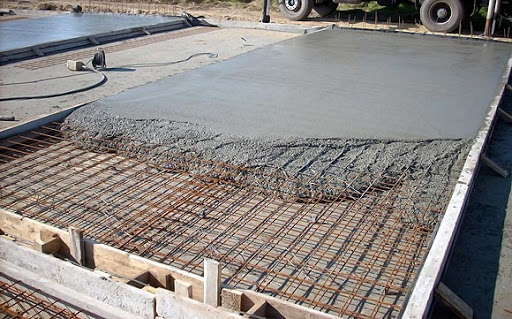
The base should be as reliable as possible, since it bears the entire load. For its construction, the following brands are used:
- M200. This material will be the best solution for small buildings - verandas, garages, fences.
- M400 is used in the construction of one-story residential buildings, since concrete for them must be at least M200.
- M500 is a brand that "specializes" in two-story or taller buildings.
Which cement is best for pouring the foundation? Naturally, the M500. This brand is as strong as possible, but the price does not differ much from the M400.
Walling
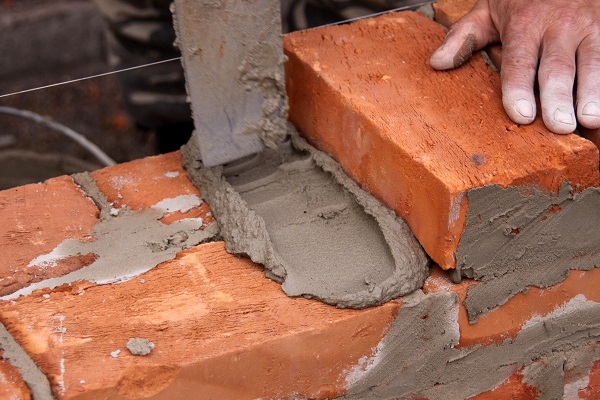
In this case, the strength of the structures depends on the masonry mortar. All buildings require (optimal) "own" material:
- M200 is suitable for building walls of a gazebo, veranda, garage or outbuilding.
- M300 is often used in the construction of light interior partitions.
- M400 is the minimum grade required for supporting structures.
Floor screed
To prepare the surface for finishing in apartments, cement grades M300-M500 are used, since the concrete should be M150 or M200. However, in this case, much depends on what load will be on the floor, what is the thickness of the screed. It is necessary to take into account the permeability, the weight of the furniture, the intensity of the movement of weights. For small work indoors (for example, for patching up cracks), the grade of cement is not so important.
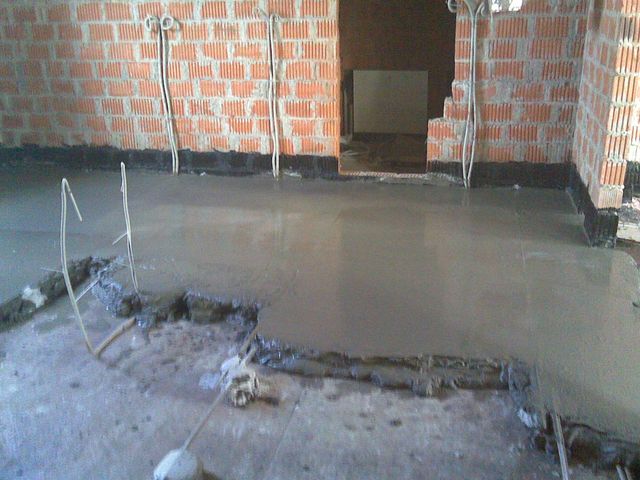
Plaster
In this case, it all depends on where the work will be carried out:
- M50 - too light, fragile, it is recommended only for grouting;
- M100 is denser and more reliable, it is used for interior decoration;
- М150, М200 are suitable for facade cladding, for interior decoration in "wet" rooms.
Homemade building materials
Often, for the improvement of the site, craftsmen make materials with their own hands. For example, they make facing or paving slabs, create cement, expanded clay concrete blocks. The M300 is suitable for these jobs.
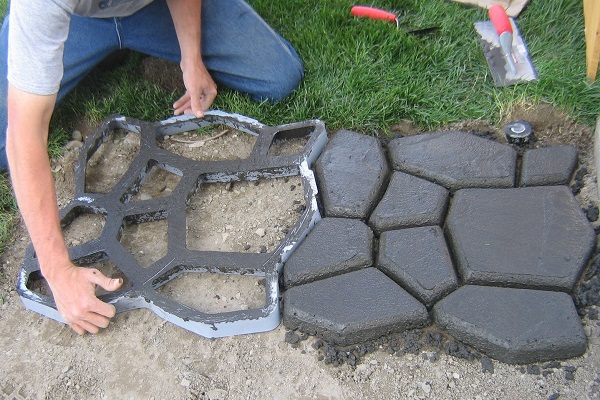
Influence of slags and impurities
Despite the fact that for the foundation of a house it is better to use Portland cement without mineral additives (they lead to a decrease in the strength of structures), in some cases mixed varieties are also needed. Their main advantage is efficiency (with the exception of formulations with modifying and specialized additives, they, on the contrary, are more expensive), the PPTs M400 d20 brand is considered an example of a good price / quality ratio.
The advantages of using slag and pozzolanic cements include sulfate resistance, they should be chosen with a high proportion of salts in the soil or other aggressive influences. But they are slower to reach the required strength, so the laying of foundations on their basis is carried out in the spring. A significant disadvantage of cement mixed with slags is a decrease in the frost resistance of concrete; it cannot be used on moving soils.
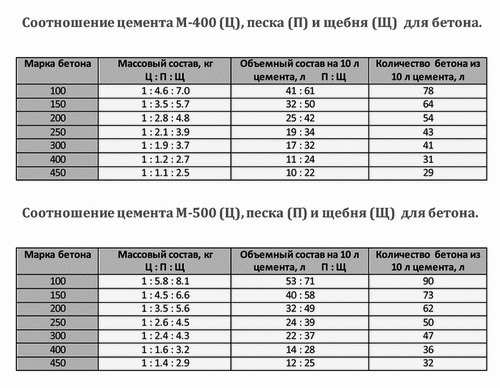
Cooking proportions
To fill the foundation, concrete with a grade of at least M200 should be made. The quality of work is directly dependent on the use of the correct ingredients, their preparation and mixing with proven proportions.Ideally, these are: fresh Portland cement without lumps, dry and sifted river sand, gravel or crushed stone from hard rocks, clean (drinking) water. Coarse filler is selected with grain size no more than 30 mm, preferably with a square flakiness, it must be cleaned of debris and, if possible, washed. The kneading is carried out in a concrete mixer, this is required not only to reduce the labor intensity of the process, but also to obtain the desired structure.
The ratio of cement, sand and gravel depends on the type of substrate. So, for columnar foundations, it is better to choose a ratio of 1: 3: 4 with a W / C of no more than 0.65, the same mixture is suitable as a masonry mortar when building it from blocks. In this case, a cement grade of at least M400 is used. For a strip type of foundation, these proportions are 1: 4: 6, with the same with a W / C ratio of 0.65. Excess water is unacceptable, it leads to disruption of the hardening processes and the formation of cracks.
The method of preparing concrete for pouring the foundation has shown itself well, taking into account the recommended brand standards. A proven proportion is chosen: 1 part of cement, 3 - sand and 5 - gravel. The W / C ratio in this case depends on the required parameters of the concrete:
| Expected concrete grade | Cement strength grade | ||
| 300 | 400 | 500 | |
| 200 | 0,55 | 0,63 | 0,71 |
| 250 | 0,5 | 0,56 | 0,64 |
| 300 | 0,4 | 0,5 | 0,6 |
| 400 | Not preparing | 0,4 | 0,46 |

What else do you need to consider?
The quality of the cement is inversely proportional to its shelf life, and given the fact that high-quality (that is, rapidly losing its properties) is acquired for filling the bases, it is necessary to use the freshest powder of a light gray or greenish color that wakes up through your fingers. The attached certificate is checked, if the volume of work allows, then the material is purchased in plastic big bags, the packaging is opened immediately before preparing the solution.
Strengthening the strength of concrete is very simple: just add fiber or plasticizers, but at the same time the way costs increase. Strip foundations must be reinforced, for them it is recommended to purchase gravel or hard crushed stone with a maximum size of fractions up to 20 mm. Regardless of the type of construction, waterproofing works are provided.
Cost of materials.
"Cement to cement - strife." This obvious statement took on a negative connotation after the recent raid by an independent commission from the Consumer Society of St. Petersburg and the Leningrad Region on construction hypermarkets in St. Petersburg. As a result of the inspection, it turned out that no more than 10 percent of the calibrated cement corresponds to the GOST standards of Russia. It is logical that at the height of the season, construction hypermarkets offer a fairly large selection of cement. An ordinary consumer often has a question about which cement to choose.
It is not so easy to find high-quality cement, because of the 20 varieties of cement that were checked for quality, the vast majority are packed in the same type of gray bags, without any "identification marks". No reliable information required for the consumer was found on the product. In this article, we will try to determine what quality cement should be, and provide tips to help distinguish quality cement from fake.
What information should a buyer have to choose a good cement? The instruction provided by the Consumer Society of St. Petersburg and the Leningrad Region will help to answer this question.
Marking and its meaning
For ease of use and differences in compositions in terms of technical characteristics in production, packages with products are marked. Consumers can easily determine what kind of cement is needed for the foundation of a house, guided by the designations on the package and the technical features of their structure.
Marking allows you to choose a suitable composition for suburban low-rise or urban high-rise construction.Among the most common alphabetic and numeric abbreviations, the following should be highlighted:
"D 0". Indicates products without additives. "D 20". Characterizes a mixture containing 20% cement and 80% additives. "H". Indicates the cement normalized by the amount of clinker. "B" Indicates a fast hardening product. "PC". Portland cement. "BC"
It draws the attention of consumers to white raw materials for finishing works. "PL"
Plasticized products with high frost resistance. "GF". Marks hydrophobic raw materials that can not absorb liquid for the first five minutes. Additional features of these products are plasticity and increased frost resistance. "SS". Classifies sulfate resistant cement. It is used for special construction in an aggressive environment. "VRTs". The markings highlight a special raw material that sets quickly and expands upon hardening. The products are waterproof.
 In the case of buying powder in bags, other markings may also occur. If the designation "PC400 D20" or "M400" is indicated on the pack, then the foundation can be poured using this composition for private small structures. Another factor influencing the choice can be the ratio of price and quality of products.
In the case of buying powder in bags, other markings may also occur. If the designation "PC400 D20" or "M400" is indicated on the pack, then the foundation can be poured using this composition for private small structures. Another factor influencing the choice can be the ratio of price and quality of products.
For use in conditions of high humidity or low temperatures, it is recommended to purchase products marked "PC400-D0". When erecting the foundation for buildings of several floors or hypermarkets, the composition "M500" or "PC500 D20" is used. For areas with unstable climatic conditions, it is recommended to purchase the grade of cement "PC500 D0".
To know which cement is best to buy for the foundation of a house, you need to determine the type of soil
The latter is often of great importance when filling the base. Experts recommend using concrete brands "M250" or "M200" on rocky and sandy soils.
For clayey lands, acquire material with the designation "M300".
Quality control of cement
Considering that cement is a very (if not the most) demanded building material, the number of companies involved in its production is quite large. You need to understand that many irresponsible manufacturers (they are often the ones who offer binder building materials in bags, on which no information is indicated), add ballast substances to the cement, which only worsen its quality. These additives can be crushed cement, mineral powder, whatever! How to prepare concrete for a foundation from such cement is a question that no specialist can solve. Unfortunately, it is far from always possible to buy high-quality factory material, so below we will give an example of the analysis of cement “on the knees” - methods that, after all, allow us to determine the quality of cement. Naturally, only laboratory studies will allow an accurate assessment, but this is already superfluous for an individual developer.
- assessment of the "freshness" of the cement. If there is no date of manufacture on the packaging (it is better not to buy such cement at all), then first of all it is necessary to check the degree of fossilization of the building material. This can be done by hitting the bag - the sensations should not resemble those of hitting a stone. It is also necessary to check the corners of the bag by touch, as they turn to stone the fastest. We open the bag, inside should find a homogeneous substance of gray color, which may differ in shades (from dark to light gray, maybe even greenish). Freshly made cement is characterized by fluidity: it easily wakes up between the fingers. If you can mold snow from cement, which then crumbles with ease, then this is a normal material. Found some lumps in the bag? If they easily disintegrate when compressed, then this only indicates that the cement has already had time to "lie down".There is nothing wrong with this, but if the lumps crumble only with a significant impact on them, and crumble into separate hard grains of sand, then it is better not to use such building material - it has managed to deteriorate;
- assessment of the composition of the cement. For the analysis, we need sodium bicarbonate (for example, Borjomi) or sodium bicarbonate chloride (Essentuki No. 4 or No. 17) mineral water. We open the bottle, let the water "run out" - we rid it of carbon dioxide. Next, we put on rubber gloves and use mineral water to knead the cement paste from the test sample of cement. From the resulting dough, it is necessary to mold a "cake" with a diameter of about 15 cm, with a thickened central part (about 5 cm) and thin edges (up to 1 cm). The setting of really high-quality cement is observed no later than 10 minutes, and the thickened part of the "cake" will noticeably heat up. It is also possible to change the shade of the cement paste - it acquires a blue-green tint. All this indicates that the cement does not contain additives - d0. On the contrary, if the seizure is not observed for half an hour or more, then it is worth worrying. As a rule, this indicates a low quality of the binder and the presence of impurities: the "cake" when setting becomes covered with cracks, hardens in fragments, does not heat up. To be on the safe side, put the test sample in a plastic bag and put it in a warm place for a day. If after 24 hours the sample has lost its shape, has impressive cracks, then the cement did not meet our expectations - it is better to get rid of it right away ... or use it at your own peril and risk. It is quite possible that the use of low-quality cement will subsequently result in the need to strengthen the foundations with cementation and other expensive work.
Consumption rates
Answering the question, how much cement is needed per cube of concrete, you need to take into account its brand and the required structural strength. The date of release is also of great importance, since this type of binder loses activity over time and is very sensitive to storage conditions.
Practice shows that it is more profitable to buy cement of a higher grade, since for preparing concrete or mortar of the same strength, it can be taken 15-20% less than low-quality.
For example, the consumption of cement per 1 m3 of a "three hundred" grade solution is: M500 - 500 kg, and M400 - 600 kg. To prepare one cubic meter of M200 concrete, you need to buy 400 kg of M500 cement or half a ton of M400 Portland cement.
To simplify the calculation of the composition of concrete or mortar, you can use the following formula:
for structures that do not carry a large load (paths, floor screed, plaster), a ratio of M500 cement and sand 1: 5 is sufficient.
For foundations, floors and other critical structures, the proportion should be 1: 2. For stock solutions, a ratio of 1: 4 is usually used.
Deciding for yourself which cement is better to choose
, remember that the date of its release is just as important as the brand. Even if all storage conditions are met, it loses about 10% of its activity every 30 days. This means that if 3 months have passed since the date of manufacture, then instead of the M500 you will buy the M350.
If the cement has been in the warehouse for six months, then its grade will not exceed 200 kg / cm2. It is unrealistic to make a high-quality mortar on such a material, and even more durable concrete. Therefore, before buying, ask the seller for a document that clearly indicates the date of manufacture.
Updated: 18.09.2019 22:30:15
Expert: Boris Mendel
* Review of the best according to the editors of the site. On the selection criteria. This material is subjective and does not constitute advertising and does not serve as a purchase guide. Before buying, you need to consult with a specialist.
No construction site today can do without such an important material as cement.Every year manufacturers improve manufacturing technologies, modernize equipment, which leads to the creation of high-quality compositions
The scope of the product is very wide, the material is used not only at construction sites, but also in other industries. Therefore, for each case, a cement with a certain set of characteristics is required. Before heading to a store or placing an order online, you should heed the advice of experts.
What color of cement is "correct"?
The color scheme of the cement is also a small point of discussion and comparison of the building audience. Here you can see the main thing - cement color
is not a clear qualitative definition. Many people believe that the darker the color of the cement, the stronger it will be, and vice versa. But everything is not so simple, since manufacturing plants receive their raw materials from more than one resource base, they have many suppliers from various metallurgical plants for slag and clinker quarries, and not only on the territory of Ukraine, supplies are also imported.
Therefore, it must be borne in mind that, due to the raw materials, the color shade of the cement will depend and there is no need to worry about this fact. The light shade of the cement is associated with the properties of the raw materials used and the mineralogical composition of the clinker. In addition, the fineness of the grinding of the cement affects the color. The more the cement is crushed, the better it is, and the lighter its shade.
No. 6. What to look for when choosing a cement?
The demand for cement is huge, which has given rise to the emergence of many unscrupulous manufacturers, who often mix additives into cement that greatly reduce the quality of the finished composition. In order not to be mistaken when choosing a cement and buy a really high-quality product, you need to know something about how good cement looks and what properties it should have:
- cement is sold in bags and in loose form. It is better to take cement in bags, because this way it is protected from external influences, retains its qualities longer, and on the packaging of the bag you can always find out information about the composition, production date, characteristics of the cement and about its manufacturer. The bags are usually made of two layers of paper, the inner one protects the cement from getting wet. By the way, the absence of any information on the packaging is also a sign that you may have low-quality material in front of you;
- if you buy cement in bulk, and it is packaged in bags, then it is better to carefully check the expiration date on each one, since in the total mass you may be sold stale goods. The activity of cement after 6 months from the date of production drops several times;
- you can test the freshness of the cement experimentally. It is enough to hit the bag - the sensations should not resemble hitting a stone. The first to stone is the cement in the corners of the bag, so it doesn't hurt to check them either. Naturally, if the production date is not on the package at all, then it is better not to take such a product;
- cement must be stored in dry and well-ventilated areas, otherwise it will quickly turn to stone;
- the color of high-quality cement is gray, more precisely from light gray to dark gray and even greenish. Dark and boggy shades are not allowed. Good cement should crumble in the hand, and when squeezed, it should not crumple into a lump;
- the fineness of the grind affects the hardening process. The finer the fraction of particles, the faster the composition will harden and the higher its price. A too small fraction increases water consumption, therefore, ideally, it is better to take cement, where fractions from 40 to 80 microns are found;
-
does not interfere with assessing the composition and characteristics of the cement. It is not difficult to do this, but in advance it is necessary to prepare bicarbonate-sodium water (Borjomi is suitable) or bicarbonate-chloride-sodium water. Gas must be released from the water. Next, we use it to knead the cement paste and form a cake with a diameter of 15 cm from it.In the center, it should be thicker (5 cm), towards the edges - narrower (1 cm). High-quality cement should begin to set no later than 10 minutes later, and the thickened part will noticeably heat up. If setting does not occur even within 30 minutes, then this is a composition of low quality.
Expiry date of cement and rules for its storage
Cement is a perishable building material. If you bought Portland cement in bags and did not immediately use it in construction, remember that:
- According to GOST, the manufacturer guarantees the quality of the cement for 60 days from the date of shipment from the plant. However, with proper storage, most cements can be stored for more than six months without significant loss of quality characteristics.
- It is advisable to use an open bag of cement as soon as possible.
For long-term storage, wrap an unopened bag of cement, provided that it is not saturated with moisture, in a sealed plastic bag. Store your bags indoors on pallets, not outdoors. Change the bags every 2-3 months. Check the quality of the cement when purchasing
can visually
... Open the bag. Scoop it up with your hand. Make a fist. Good cement will flow through your fingers like water without clumping. The color of quality cement is gray or light gray. The mixture must be homogeneous, free of impurities.
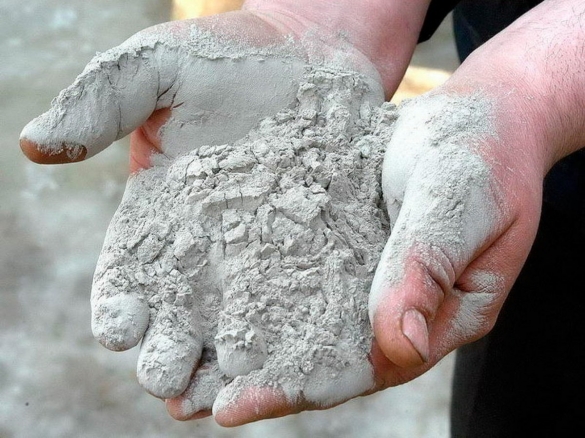
Characteristics of the building mixture
Mineral additives guarantee one or another property of the cement. Therefore, the question of which cement is better cannot be answered without linking it to a specific construction object.

- Strength is the main quality of a substance. It depends on the gypsum or slag introduced into the composition. It is the strength of the cement that determines the brand of cement.
- Grinding fineness. This characteristic directly affects the reliability of the mixture. The finer the grinding of the cement, the better the concrete will be.
- Frost resistance. This is the ability of the material to resist freezing and thawing cycles. Additives-modifiers are responsible for it.
- Corrosion resistance. The cement with the highest rates is used for the construction of underwater, underground facilities.
- Sulfate resistance - ability to resist salt water. It is important in the construction of structures that come into contact with sea water.

Water resistance is another quality, it shows the speed of concrete setting. It is important if you have to work on sealing seams or joints in conditions of high humidity.
Features of buying material
Once you have decided on the cement - go to the store. If there is no experienced builder nearby, then an independent choice without certain knowledge can play a cruel joke. The main task of the seller is to sell the product, and if he sees that an inexperienced person is in front of him, then he can recommend more expensive options or a low-quality product
When purchasing it, pay attention to the following
Examine the packaging carefully. The presence of gusts, cuts and other damages that violate the tightness of the bag is unacceptable. Cement has the ability to absorb moisture. The bag should have small holes to drain excess moisture.
See production date. The younger it is, the better the concrete will be prepared later. If the date of manufacture is more than two months, then it is better not to use it. In the absence of a production date, in doubt, ask the sales assistant for a quality certificate
If it is not there or you are refused to provide it, then this should raise some doubts.
Pay attention to the country of origin. Best of all - a domestic manufacturer or a country with similar climatic conditions
Requirements for the same brands may vary significantly!
Feel the corners of the packaging when choosing. First of all, it is there that lumps form.Due to the fact that during storage in warehouses, products are stacked, there is a direct relationship: the lower the layer, the more the bulk material is compacted. Therefore, the bag needs to be shaken and, with the help of tapping, determine the looseness (airiness) of the contents. If you are satisfied, buy.
When opening the bag, the color of the contents can vary from gray to gray-green, wake up freely through your fingers, and when squeezed in the palm of your hand, form a lump that crumbles with slight shaking.
The presence of dense cement inclusions testifies to the stagnation of the building material. When, when exposed to lumps, they easily turn into a homogeneous mass, such a building material can be used, but if they are sufficiently compressed and are difficult to mechanical stress, then it is impossible.
After choosing a kind, buy only it. You shouldn't work according to the principle: I almost didn't have enough, I'll take what he has from a neighbor. A prefabricated hodgepodge for laying the foundation of a building will not lead to anything good.

Which cement manufacturer is better to buy?
This is an equally common question after the question of which brand of cement is better. There are products of dozens of domestic and foreign brands on the Russian market, so it is difficult for a novice developer to figure out which cement manufacturer is better, and if financial resources permit, he traditionally prefers expensive imported products. Consider this problem in terms of the timing of the manufacture and storage of imported and domestic material.
The main suppliers of cement to the Russian Federation are European countries, Turkey, Iran, Egypt and the People's Republic of China. Accordingly, the delivery of cement to the wholesale depots of the Russian Federation takes a certain period of time. In addition, cement goes through a number of transshipments, which does not add freshness and quality to it.
Delivery of Russian cement is much faster with fewer transshipments. Therefore, given that each domestic manufacturer has its own laboratory and is fighting for a client with high quality products in conditions of fierce competition, the answer to the question of which cement manufacturer is better is a manufacturer located in the Russian Federation. The most popular brands are Eurocement, Lafarge, Holcim, but this does not mean that the cement of other plants is worse.
The above does not apply. At this point in time, in terms of the whiteness of the products, imported cements are somewhat better than the products of the only Russian plant producing white cement - Holsim (Rus) SM LLC.
When buying cement, many of us know very little about this building material. As a result, brickwork, foundation and mortar screeds are of poor quality and crack under the influence of load, frost and groundwater.
Ignorance of the specifics of the use of various types of cement, its grades and characteristics lead to overconsumption of this material.
Untimely use and improper storage leads to damage and loss of investment.
In order to confidently navigate when choosing cement for renovation, improvement or new construction, we will consider in more detail its classification, as well as strength and price indicators.
Cement is a powdery building material consisting of a binder base - clinker, filler and modifying additives. On contact with water, it turns into a plastic mass called cement paste. As it hardens, it turns into a solid stone.
Unlike other binders (gypsum, lime), all types of cement harden and gain the necessary strength not only in air, but also in water.
The main characteristic of any cement is its brand. This is a digital designation of its solid strength, expressed in kg / cm2. The brand is determined in accordance with the standards of GOST, carrying out tests of samples for bending and compression after 28 days of exposure.Fast-hardening types of cements are tested for strength 3 days after preparation of the solution.
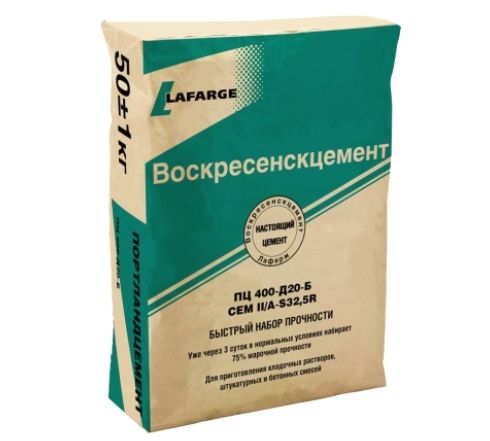
The brands of this group of binders are designated in numbers from 100 to 900
(with a step of 100 or 50 kg / cm2). Today, cement grades below 300 are not produced. The most popular on the market are M400 and M500. High-quality cements (from M600 and above) are used in military, mine, airfield and hydraulic engineering construction.
When buying a bag of cement in a store, you will see on it not only the brand designation, but also other abbreviations, the meaning of which we will now explain. In the retail network, Portland cement is most often sold, marked with the letters - PC.
To regulate the setting speed, increase frost resistance and water permeability, special additives are introduced into the cement composition. They are designated by the letter D, after which the percentage of additives is indicated (0, 5, 10 or 20%). For example, Portland cement grade 400 with 20% chemical additives is marked as follows: PC 400 D20.

